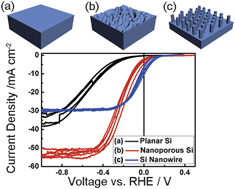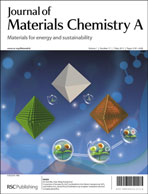Nanostructural dependence of hydrogen production in silicon photocathodes†
Abstract
Hydrogen production from solar power energy is an important energy and environmental issue. Silicon (Si) has been widely studied as a photocathode for hydrogen production from


 Please wait while we load your content...
Please wait while we load your content...